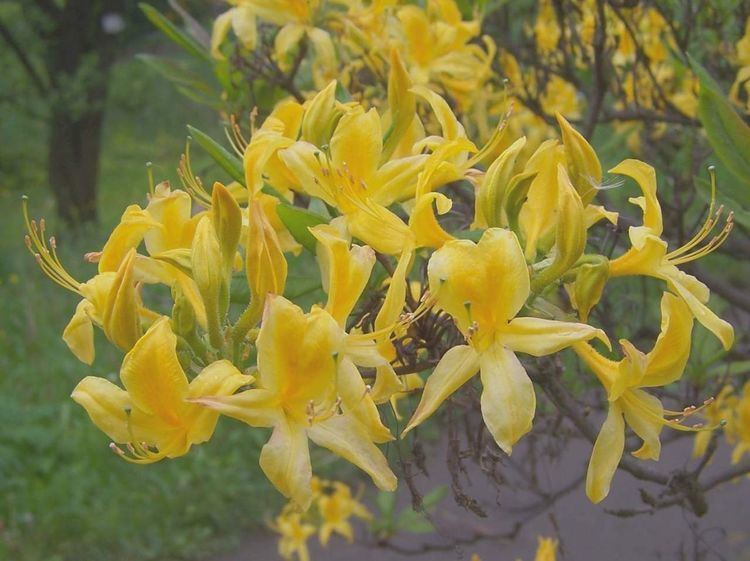 | ||
Chervona Ruta (Ukrainian: Червона рута, red rue – heady plant) is a flower, but also part of the Ukrainian culture related to the holiday of Ivan Kupala Day. According to the legend, still respected in Carpathian mountains and Bukovyna, rue is a yellow flower which turns red only for a couple of minutes on the night of Ivan Kupala. The girls who will find the flower will be happy in love.
Contents
Biology
Legend
"Chervona" is translated from Ukrainian as red. The ruta flower has yellow blooms, but according to legend, on the eve of Ivan Kupala Day, the flower turns red for a very short time on the eve of the Summer solstice (celebrated on June 23 or sometimes July 7).
The flower brings fortune to the person who finds it. In various versions of the tale, the fern flower brings luck, wealth, or the ability to understand animal speech. However, the flower is closely guarded by evil spirits and anyone who finds the flower will have access to earthly riches, which have never benefited anyone, so the decision to pick the flower or leave it alone is left up to the individual.
Popular culture
"Chervona Ruta" is a popular Ukrainian song written by Volodymyr Ivasyuk in 1968 and performed by many singers and groups. It was popularised by Ukrainian groups like "Smerichka" and singer Sofia Rotaru who later formed the Chervona Ruta ensemble.
The song's initial popularity was followed by a 1971 Ukrainian musical film Chervona Ruta written by Miroslav Skochilyas and directed by Roman Oleksiv, starring Sofia Rotaru and Vasyl Zinkevych alongside other popular Soviet Ukrainian ensembles.
The Chervona Ruta Festival is a biennial music festival in Ukraine, which started in 1989.
Etymology
"Chervonyi" is an old Slavonic word meaning "red".
In Ukrainian (Ruthenian) language
In such a way, when the Halychyna was also called Red Ruthenia which in turn derived from Cherven Cities (Red Cities).
In Russian language
The transformation of the meaning of the adjective "krasnyi" (red or beautiful) in Russian language has an interesting history. The proverbs "A house is red judging by its corners", "A debt is red by its payment", "Red girl" means "red", "good" as to beautify from the Slavic word "krasa" - beauty.
For the color notation proper, the Slavic languages use the word "chervonyi". But in the Russian language, the word "chervonyi" for the red color has been lost, although one can still see the link in the word "chervontsy" (bank notes worth of 10 roubles of red colour). Many linguists consider that through Russians' use of the word for the banknote, the initial sense of the term was permanently altered.
